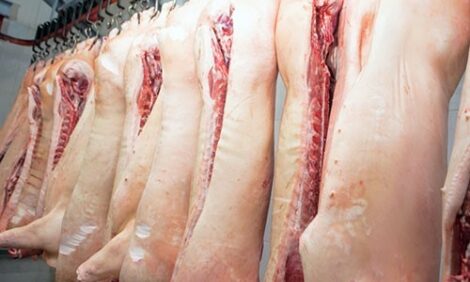



Pig farmers face 'difficult times'
UK - Most of the attention in the latest foot-and-mouth outbreak has focused on cattle farmers, but other farmers, including pig farmers, are also badly affected. |
| Around 15 per cent of the UK's pork is exported, mostly to the EU |
Jeremy Barber is both relieved and worried. In addition to having 3,000 breeding ewes on his Somerset farm, he has 450 breeding pedigree sows. He sells 15,000 breeding pigs a year to farmers in the UK, and is also involved in a business which sells a large amount of breeding stock to countries around the world.
While Wednesday's lifting of the movement ban means he will be able to take lambs and pigs to the abattoir, his breeding pigs still cannot leave the farm.
Nightmare
Mr Barber accepts that livestock movements cannot be eased completely until the disease is "100 per cent under control". But he is more concerned about the effect of the export ban, particularly to countries outside the European Union. Britain is a world leader in exporting breeding pigs, and the ban could have a massive impact.
"People like myself are snookered in terms of selling abroad," Mr Barber said. "At the moment, there is great doubt as to when that would start again. It could be three months or three years, and it could cost us hundreds of thousands of pounds."
He said the past week had been a "nightmare" and the outbreak came at a very difficult time for pig farmers, with the price of wheat having doubled in the past six months. "Everyone's cost of production has gone up by 14-20p," he said. "We need to see 5p on a 200g pack of bacon and if we don't see that, and now what with foot-and-mouth, pig farming is in serious trouble in this country."
Cambridgeshire farmer John Millard has 8,000 pedigree pigs, and the bulk of his business last year was with China, Ukraine and the Philippines.
"Specialist breeders will probably suffer most under the export ban," he said. "It took a long time to reopen the markets after 2001 and I had just received a draft proposal to export live animals to Ghana, which is now out the window."
Supermarket fears
In an average week, about 150,000 pigs in Great Britain would be sent to the abattoir. Mick Sloyan, chief executive of the British Pig Executive (BPEX0, explained why the movement ban has had such a big impact on pork producers.
"At this time of year cattle and sheep can be left to pasture, chomping away happily," he said. "But a sow has 11 piglets every time she gives birth, twice a year. There are pigs moving through the system on a regular basis in large volumes and so if you suddenly close the outlet (to the abattoir), there is a build-up of numbers very quickly."
He said the lifting of the ban had spread "great relief" among pig farmers and because it only lasted a week, they were likely to recover in the short-term. But he agreed that the export ban posed a bigger problem.
There are five million pigs in the UK, and pork producers made £700 million last year. Most of the pork is produced in England and stays within the UK. Around 15 per cent is exported and exports of pork, bacon, sausages, offal, and breeding pigs were worth £187m in 2006. Around 80 per cent is exported within the EU, and Mr Sloyan expects access to that market to come through relatively quickly if "we stay on top of things".
But it will take longer to reopen markets in countries such as China and Japan, he said.
"Markets such as Hong Kong are important for offal as we don't tend to eat it here anymore. Over six months, we could lose £10m from trade with countries outside the EU."
He said the export ban would make pork producers even more "captive" to the domestic market.
"If we don't have an export market, we fall back even more into the hands of the domestic market and the supermarkets, so let's hope they do the right thing," he said.
Source: BBC News








